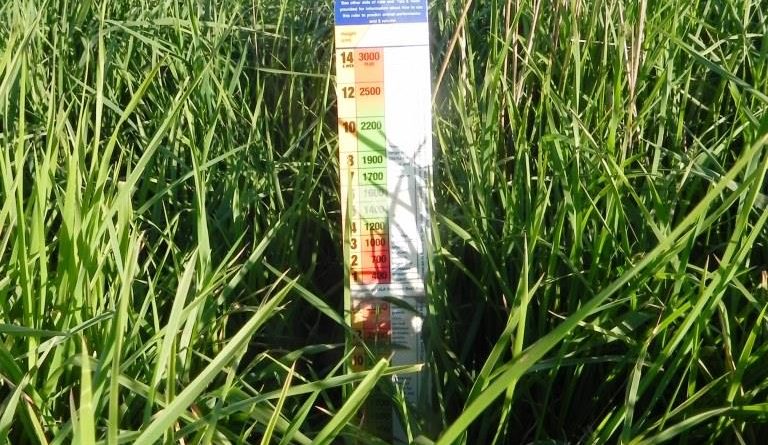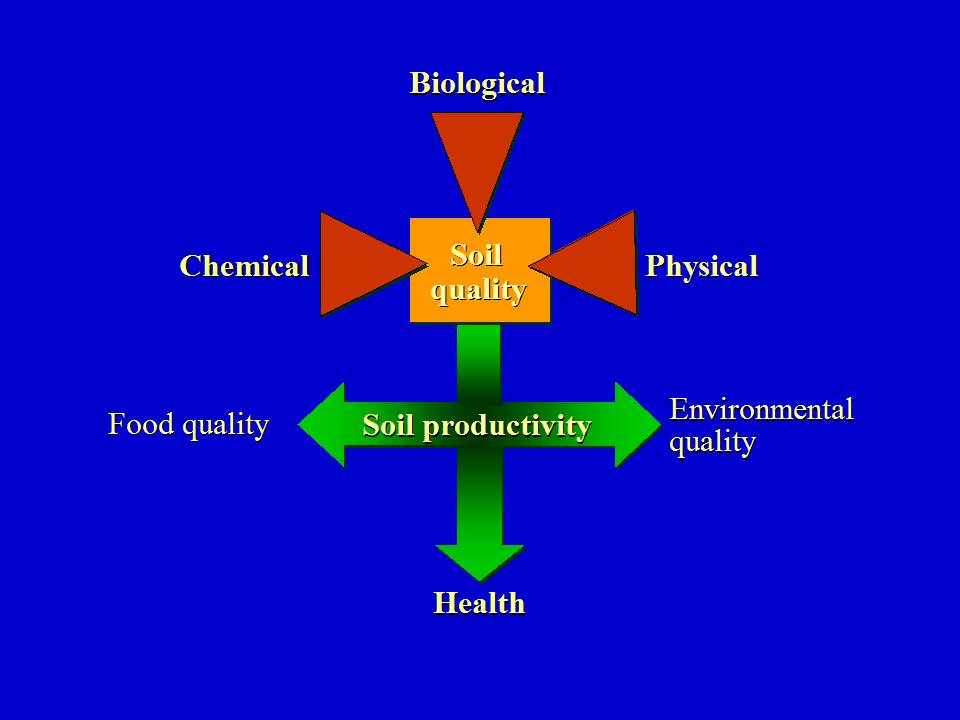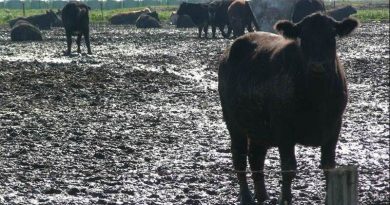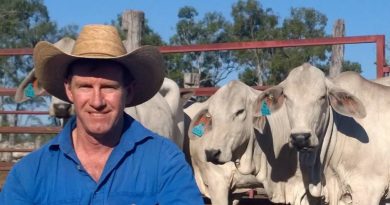Messaging on minimum pasture ground cover quantity is inconsistent and often ignores ecosystem functions
By Patrick Francis
Ground cover quantity and percent of perennial plants are the two most critical components for maintaining healthy and resilient pasture ecosystem functions. Yet in most livestock grazing enterprises across Australia’s medium to high rainfall agricultural zone they are generally the most neglected, miss-understood and miss-represented metrics. Across southern Australia pasture degradation is usually seasonal through summer and autumn but in below average rainfall years it can be year round. It stems from farmers inability to match year round paddock stocking rate with paddock carrying capacity to ensure ecological stability irrespective of rainfall.
It’s why some livestock farms become dust bowls during droughts while others maintain their ecological stability.
Farmers are not entirely to blame because long-standing livestock extension advice provides them with conflicting messages as to what ground cover quantity and percentage perennial plants in a pasture, is acceptable. These conflicting messages stem from two very different livestock farming objectives. The first is about utilising pasture for optimum livestock productivity and profitability per hectare based on animal nutrition science. The second takes into account animal nutrition science but in conjunction with ecosystem function science so that both operate in harmony.
The first system is often referred to as conventional livestock farming while the second is called holistic livestock farming. The first is often associated with pasture “booms and busts” due to failure to understand the relationship between pasture growth and seasonal rainfall variation so that pasture stocking rate over the year exceeds pasture carrying capacity for the year. In contrast holistic livestock farming accommodates rainfall variation as normal and meets its variations by ensuring annual paddock stocking rates never exceeds the paddocks carrying capacities, figure 1.
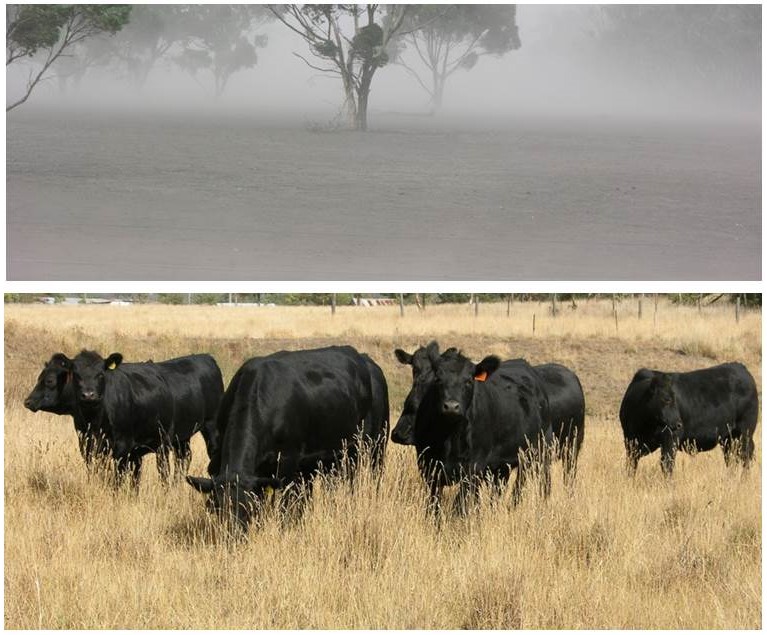
Figure 1: Conventional grazing management (top) where stocking rate exceeds paddock carrying capacity versus holistic grazing management (bottom) where stocking rate matches paddock carrying capacity. Same dry spring/summer, same district (central Victoria), same month (March). Photos: Patrick Francis 2009.
Best practice grazing management is unequivocal about the minimum level of pasture cover, 1200kg dry matter per hectare (green or dry) required to maintain healthy paddock ecosystem functions like rainfall infiltration, the soil food web, water quality, and pasture plant resilience in a variable climate. MLA’s More Beef from Pastures states that with best practice grazing management “the preferred pasture mass is between 1500kg DM/ha and 2500kg DM/ha” (module 4 page 12). The booklet then goes on to confuse readers by stating “the preferred pasture mass for stopping grazing on improved perennial pastures is 1000kg DM/ha depending on pasture type and season” (module 4 page 12).
The MLA Pasture Ruler, figure 2, encourages 1200kg green DM/ha as a minimum but also confuses the user by including on the back of the ruler much lower levels depending on the type of sheep or cattle grazing the paddock, e.g. “dry sheep 400kg DM/ha, dry cow 700kg DM/ha in a 75% digestible pasture;”.

Figure 2: The conflicting messages on the MLA Pasture Ruler. Left: The front states the “preferred range of DM/ha for animal and pasture production” is between 1200 and 2200 kgDM/ha. Right: the back of the ruler suggests the acceptable level can be as low as 400 kgDM/ha depending on the class of stock grazing the paddock.
The data on the back of the ruler is based on the Prograze “Minimum herbage mass to maintain satisfactory production levels”, table 1. Providing different paddock DM targets for different classes of stock undermines the ecosystem functions objectives for maintaining 1200kg DM/ha. Science demonstrates different classes of livestock can maintain and/or grow at different feed available levels and dry stock can maintain weight on extremely low kilograms of dry matter per hectare, such as wethers on 400kg DM per hectare.
Table 1:
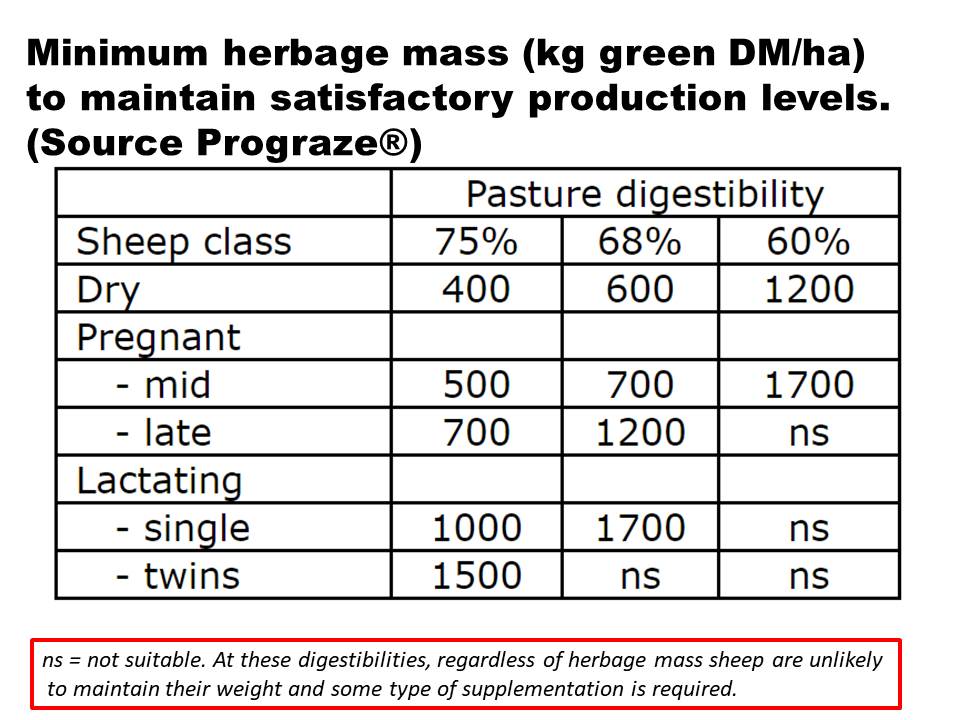
The lack of consistency around the pasture herbage mass target when livestock should be removed from the paddock to preserve ecosystem functions is also evident in pasture research. A recent paper reviewing fertiliser impacts on native pastures by M. Mitchell et al highlighted current recommendations for native pasture management. Amongst the recommendations was “Target minimum herbage mass is 800kg DM/ha and ground cover 80%”. It continued on to state that the recommendations in the most part “…are the same as those for a sown introduced perennial pasture.”
This recommendation is however at odds with the MLA pasture ruler and the More Beef from Pastures minimum target of 1200kg DM/ha and is also at odds with Prograze targets which identify pasture levels for specific classes of livestock.
Dangers of low pasture mass
There are three practical dangers associated with grazing pastures with less than 1200kg DM/ha. The first is the difficulty of maintaining a pasture level at 400 or 500kg DM/ha over summer and autumn in southern Australia. These levels are so low the flock or herd will be grazing the residue into the ground in a short period of time unless animals are removed from the paddock and even then this level is insufficient to protect soil from heavy thunderstorm water erosion. So instead of having even 400 or 500kg DM/ha the livestock are grazing virtually bare ground. This has animal welfare implications unless supplementary feed is being provided to ensure live weight is maintained.
Lower than 1200kg DM/ha pasture mass also has negative implications for the soil food web over summer. Pasture plant crowns and litter which make up the 1200kg DM/ha shade the soil from intense heat and subsequently helps to protect the soil food web on and under the surface. Temperature measurements taken on the surface of paddocks without significant cover can reach above 60C, in contrast the surface covered with litter and plant crowns will be less than 40C at the same time. The extreme temperatures not only kill heavily grazed plants they also kill soil biology close to the surface.
A MLA demonstration over three years in western Victoria’s high rainfall perennial pasture zone highlights the practical difficulty of maintaining a target DM/ha once the level had dropped below 1200 kg/ha. The demonstration compared two systems;
* The deferred mob were kept in containment and fed a grain/hay ration meeting their energy, protein and fibre requitements and continued in containment until Feed on off (FOO) was adequate to meet the target for twin bearing ewes at lambing (approximately 1400kgDM/ha).
* The set stocked mob grazed according to the producers’ usual management style and split across the treatment paddocks just prior to lambing.
The FOO averaged over three years for the two systems is shown in figure 3.
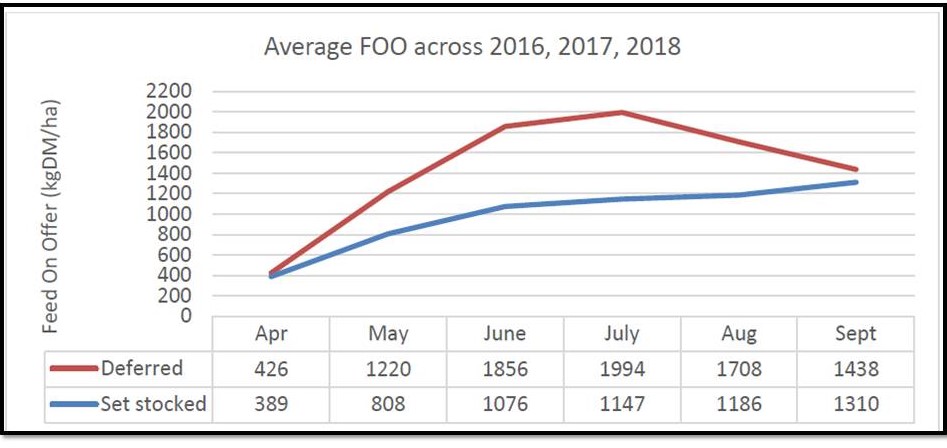
Figure 3: Average feed on off in two different grazing systems being compared in an Autumn Saving of Pasture demonstration in western Victoria. Source: MLA, Bindi Hunter Ag Vic June 2019.
What is striking is how little dry matter is in the pastures by April, with both systems starting at just 400kg DM/ha. How long the FOO was at that level is not disclosed in the trial. But the commentary around the levels is revealing. “The average FOO across the three years shows a rapid increase in the deferred paddocks, continuing after ewes were released in late May. Deferred FOO levels then plateaued in late June-July as temperatures drop, then decline mid-July. The target FOO of 1400kgDM was reached on average, in late May. Average FOO in the set stocked paddocks increased at a much slower rate and never reached the target of 1400kgDM/ha for lambing ewes. At lambing (July 1), the average FOO was just over 1100kgDM/ha”.
The demonstration report makes no reference to any animal health issues associated with such low levels of pasture in particular internal worm burdens of ewes and lambs or to the ecosystem functions of the paddocks or to impacts on resilience of the pasture species present.
The focus of the demonstration was purely around the economics of recovering from the low FOO so that lambing ewes would have sufficient feed in the paddock by 1 July: “The average time in containment to enable adequate FOO accumulation to meet the target 1400kgDM/ha was 33 days, costing an average of $5.17/ ewe. The extra FOO grown prior to lambing averaged 850kg DM/ha, at a cost of $48/t.”
The second critical implication of such low pasture quantity is soil, water, and biodiversity degradation. In other words once the pasture dry matter sinks below 1200kg DM/hr and grazing is continued ecosystem functions across the paddock are deteriorating, figure 4.
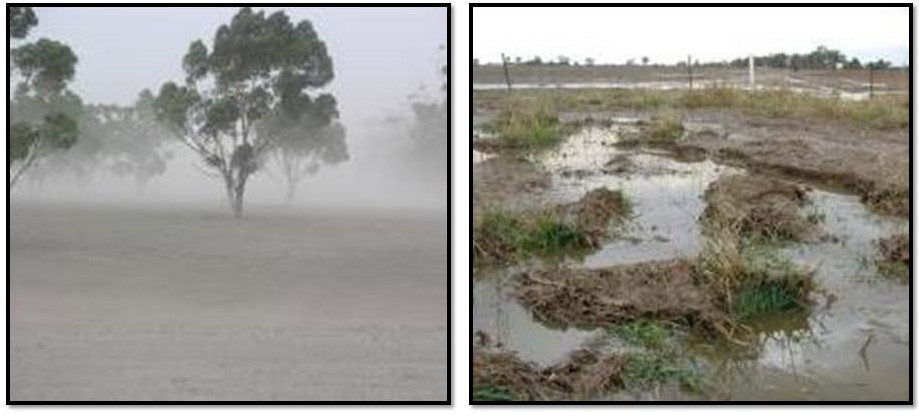
Figure 4: Once ground cover levels drop below 1200kg DM/ha especially over summer and autumn in southern Australia ecosystem functions can be seriously degraded by wind and rainfall. Photos: Patrick Francis
The third implication contradicts the ruler’s statement that a minimum of 1200kg DM/ha is important for maintaining pasture production, or in other words maintain pasture species resilience. Perennial grasses grazed below 1200kg DM/ha are under threat of dying especially during summer and autumn under set stock and sub-optimal soil moisture. With climate change causing increasingly variable rainfall across southern Australia and a trend of lower rainfall in autumn, perennial grass pastures need careful grazing management to survive and avoid re-sowing. Decadal trends in seasonal rainfall trends on Moffitts Farm demonstrate just how precarious autumn rainfall is becoming for pasture growth, figure 5.
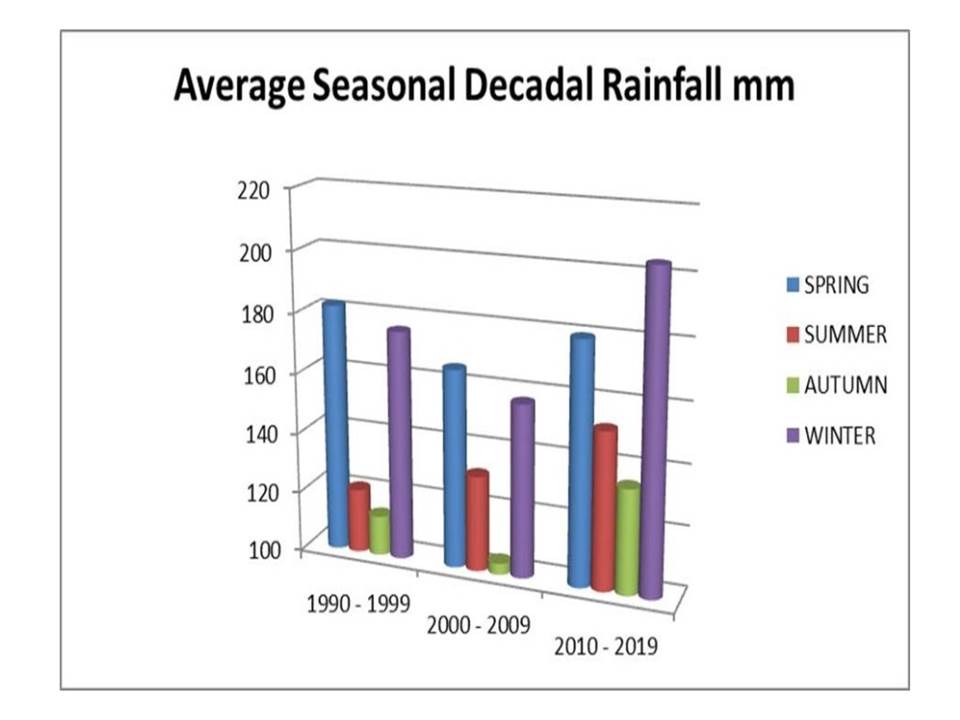
Figure 5: Summer and autumn rainfall on Moffitts Farm has become increasingly variable and unpredictable with climate change. Source: Patrick Francis.
Too often these three implications of grazing below 1200kg DM/ha are not addressed when agricultural scientists and farm advisors undertake grazing management trials and give advice.
An April 2019 Agriculture Victoria webinar covering pasture management after the drought. It presented a case study around a farmer’s perennial pasture sown in autumn 2017 and after overgrazing through the dry summer/autumn of 2018/19 needed restoring. The advice was to re-sow the perennial pasture. There was no discussion around why the pasture needed re-sowing and if it could have been avoided, or about the ecosystem functions of the paddocks with no surface cover during summer/autumn, or about the cost of re-sowing and the delayed pasture production as the farmer waits for regrowth.
This webinar case study showed a perennial pasture that could have been anywhere across the high to medium rainfall zone of southern Australia. On Moffitts Farm a similar perennial pasture had been sown in autumn 2017 but the impact of grazing over the dry 2018/19 summer autumn was completely different. The Moffitts Farm pasture was rotationally grazed to retain a minimum of 1200kg DM per ha over the period. The result once the autumn break happened in early May 2019 was a perennial pasture that within six weeks had grown 3000kg (green) DM/ha and was ready to be grazed, figure 6.
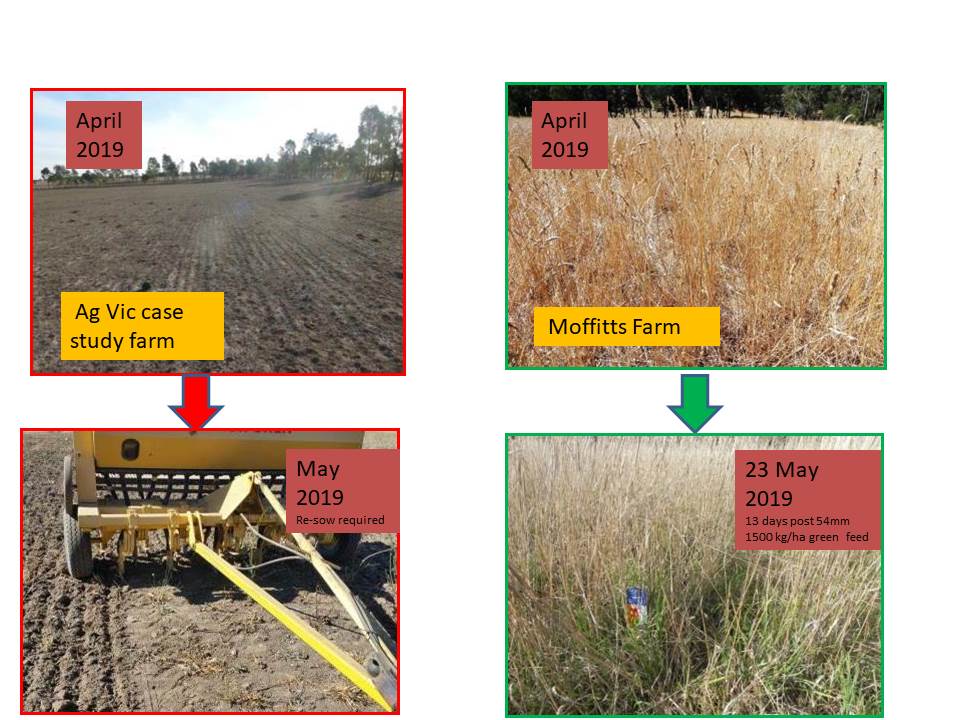
Figure 6: Ag Vic webinar case study in April 2019 covering pasture strategies post the autumn break versus a pasture sown on Moffitts at the same time in 2017, but managed since then with attention to minimum herbage mass per hectare.
That such low level of pasture mass is considered normal was demonstrated in a MLA sponsored webinar in June 2018. In this webinar presenter John Graham, NSW Ag, provided a pasture fodder budget for a rested paddock starting at 400kg DM/ha in June. The “actions” proposed by Graham to improve pasture growth during winter were applications of either gibberellic acid (a plant hormone) or urea or both. What is striking is how slow the pasture growth is at the two different heights above sea level compared to the Moffitts Farm example in figure 3. Such slow growth should not be unexpected given how low the pasture mass was by late autumn. The example demonstrates why interventions like gibberellic acid and nitrogen fertiliser are needed to help overgrazed perennial grasses to respond to rainfall.
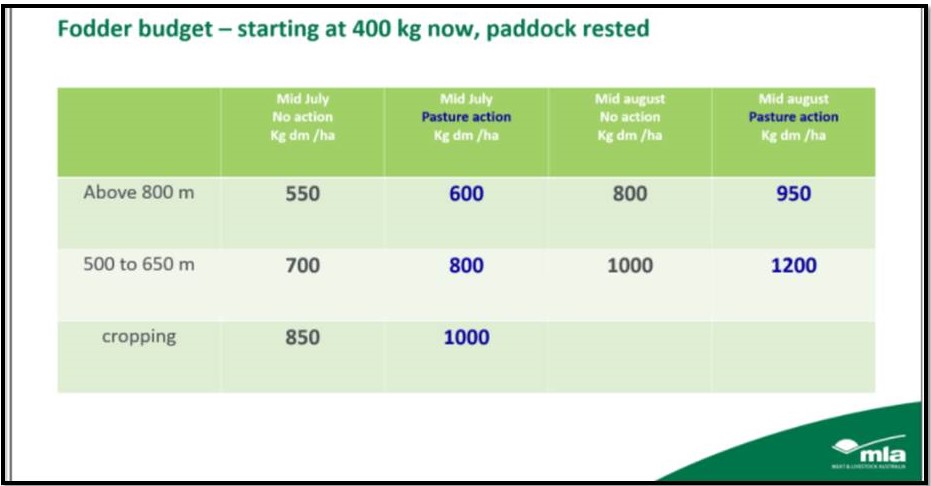
Figure 7: A case study from a June 2018 webinar showing how a pasture starting at 400kg DM/ha will respond to different management actions such as application of gibberellic acid, urea or both. Source: John Graham NSW Ag.
What is surprising about these two examples is the way the presenters accept bare paddocks or low DM/ha pastures are relatively normal at the end of autumn. While both examples relate to drought conditions in Victoria and NSW respectively the point about preventing paddocks being grazed so low was not discussed. As well, there were no references to the ecosystem functions being degraded by this grazing management.
It is difficult to understand why consultants don’t advocate for higher minimum pasture mass levels. There have been numerous demonstrations of the difference in the resilience of plants set stocked versus those under rotational grazing. The outcomes for perennial grass species resilience is the same irrespective of climate.
Figure 8A shows a demonstration of the impact of overgrazing on Mitchell grass in western Qld. Figure 8B shows other demonstrations of grazing impact used in extension material.
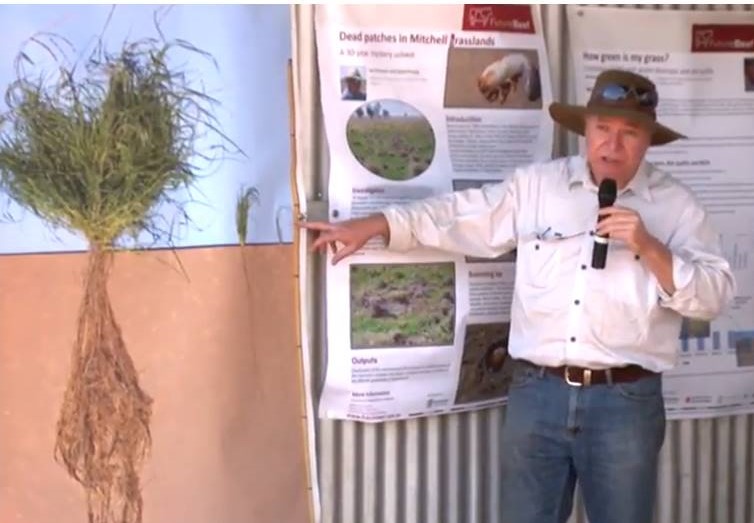
Figure 8A: Dr David Phelps shows the comparison between Mitchell grass root growth in plants rested for five months versus root growth in Mitchell grass cut every seven to 12 days to mimic livestock grazing. Source: Barkly Landcare Northern Territory field day November 2016.
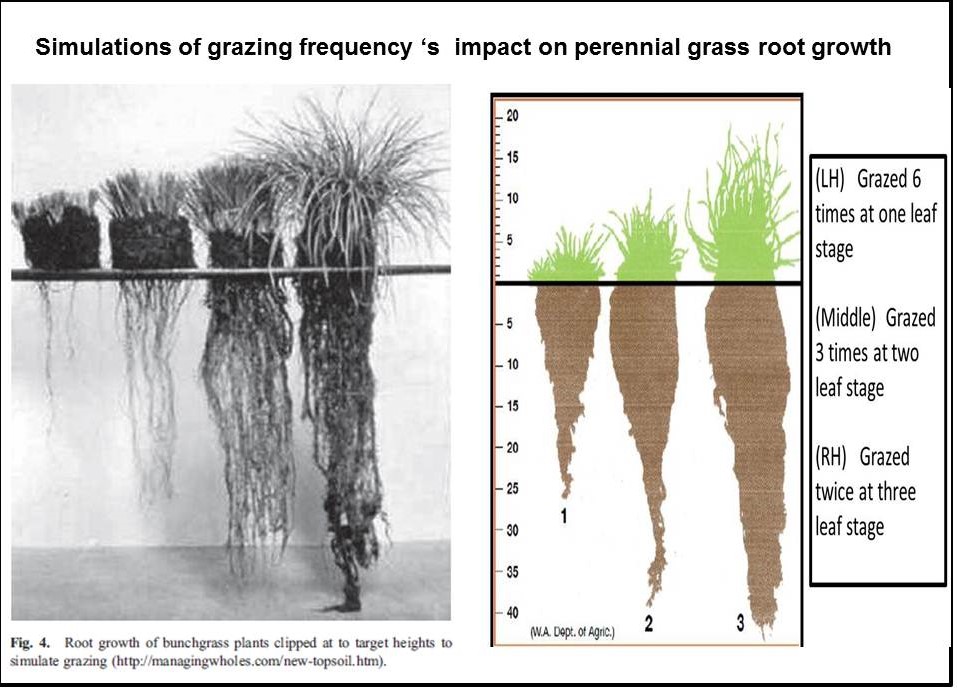
Figure 8B: Simulations of how grazing which reduces pasture herbage mass below around 1200kg DM/ha significantly reduces root growth have been used to demonstrate why over-grazing should be avoided.
The point being made in figures 8A and 8B is that grazing which reduces herbage mass to low levels also reduces root growth abundance and depth into the soil profile. This means the over-grazed perennial plants (less than 1200kg DM per ha) take longer to recover after rain because their leaf area to catch sunlight is low and their root abundance to capture soil nutrients and water is also low, compared to bulky plants.
Figure 9 showing pasture plant bulk and root depth on Moffitts Farm and on a nearby property demonstrates the same outcome for different grazing regimes in Central Victoria. It highlights why the Moffitts Farm holistically grazed pastures respond so well after a rainfall event as shown in figure 3.
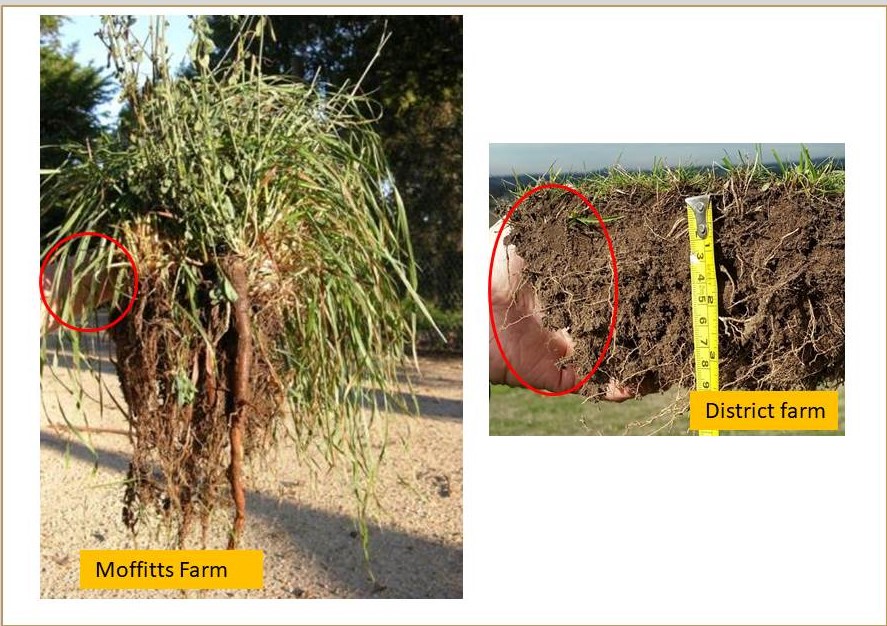
Figure 9: How grazing to ensure bulk never drops below 1200kg DM/ha impacts root growth. Left: Moffitts Farm multi-species perennial pasture which is rotationally grazed. Right: a district farm where set stocking prevails. The hand (circled) gives a reference to scale of the root growth. Photos: Patrick Francis.
Sub clover percentage
One of the major contributors to low pasture bulk during summer and autumn across southern Australia is high levels of pasture annual legumes. Sub clover and medic in excess of 30% of winter pasture composition is often advocated in conventional grazing management. That’s because these levels produce a high nutrient quality pasture which optimises livestock growth through winter and spring.
A recently published MLA, Perennial Pasture Systems demonstration on multiple farms in western Victoria highlighted just how high sub clover percentage can be in particular years, figure 10. Combined with annual weeds such as capeweed, and silver grass, many of the farms involved had perennial pasture grasses (mostly phalaris) comprising less than 30% of the total herbage.
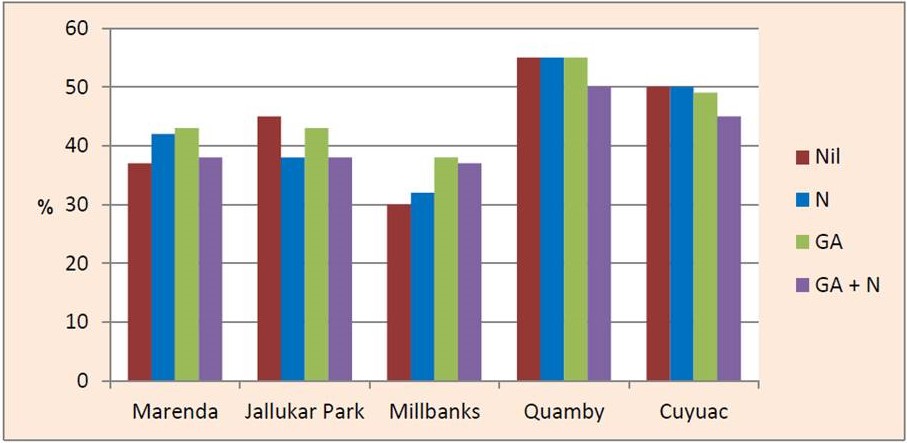
Figure 10: Proportion of sub clover in the pasture for each site and treatment, in a western Victorian demonstration 2016. Source: MLA and Perennial Pasture Systems Innovative use of gibberellic acid April 2019.
This means most of the paddocks are going to be left with a high proportion of bare ground through most of summer and autumn if farmers take advantage of the spring sub clover growth. Once the annuals are grazed off or naturally die the only permanent ground cover left are the crowns of the perennial grasses.
Once again the negative consequences for paddock ecosystem functions are serious with wind and water soil erosion, loss of nutrients, organic matter and biodiversity on and below the soil surface. Figure 11 shows the difference between high level of perennial plant cover as a result of holistic grazing management on Moffitts Farm versus set stocking a high sub clover content pasture.
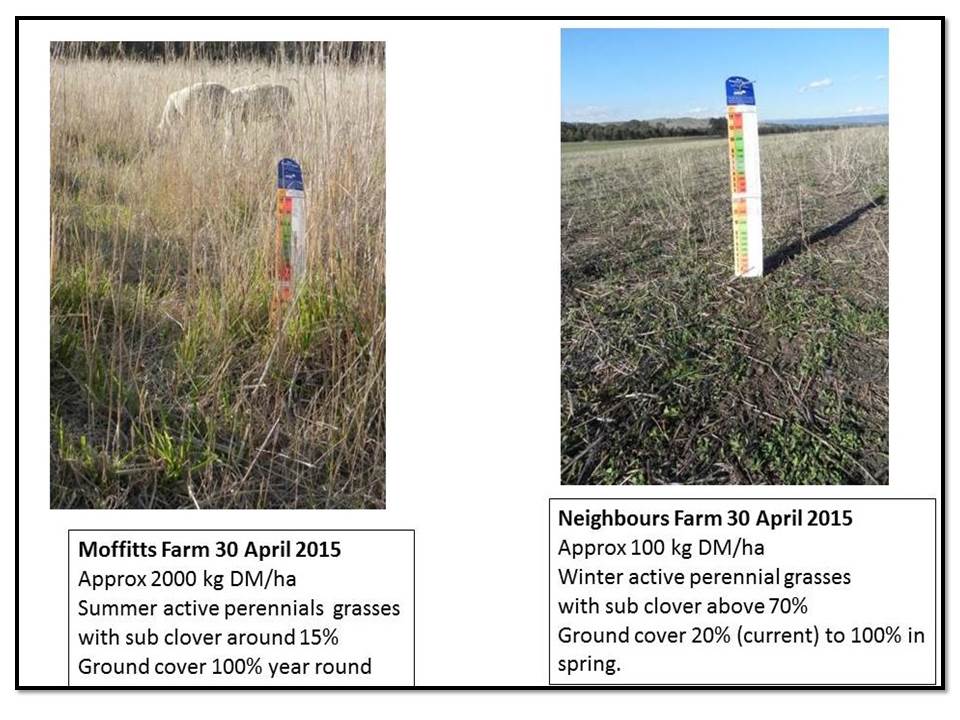
Figure 11: Comparison of Moffitts Farm pasture with high ecosystem functions and perennial grass resilience versus a high sub clover content pasture at the autumn break. Photos: Patrick Francis.
Agricultural researchers also have a role to play in highlighting the importance of a minimum 1200kg DM/ha and at least 80% perennial plants in the pasture.
The other metric associated with ground cover is its percentage cover which is generally agreed upon for pasture to be a minimum of 70% with the objective being 100%. This percentage is made up of both plant crowns and plant litter.

